Description
The second half of the 19th C saw a tremendous amount of innovation in firearm design
and development, going from muzzle-loading single shot black powder muskets to
self-feeding fully automatic machine guns with rates of fire of hundreds of rounds per
minute. This rifle began as the revolutionary M1867 Werndl-Holub, a single-shot
breech-loading rifle which replaced the Wanzl breech-loader conversion of the
muzzle-loading Lorenz rifle in the service of the Austro-Hungarian Army. Josef Werndl
(1831-1889) and Karel Holub (1830-1903) designed and patented the design and Werndl
later bought out all the rights.
The original 1867 model of the Werndl–Holub featured an external hammer mounted on
the lock plate, however, in 1873 they moved the hammer to the inside of the lock plate
and it became known as the M1873. Though they are called “internal” hammers, the
hammer is still exposed, but pivots inside the lock plate. The M1873 are far rarer than the
original 1867 model. Additionally, this example, is in fact a rarer version than the normal
infantry Rifle in that it is classed as a WERNDL JAEGER RIFLE, having an extra steel
hand rest behind the standard trigger guard. These were issued only to Special troops
such as Pioneers and Sappers. ŒWG (Österreichische Waffenfabriksgesellschaft)
produced the Werndl and it was originally chambered for the 11mm scharfe Patrone M.67
(11.15×42R) cartridge. In 1877 the military rechambered many of the Werndls for the
bottleneck 11mm scharfe Patrone M.77 (11.15×58mmR) cartridge. These were refitted
with a rear ladder sight graduated to 2100 paces. This example features the 1400 pace
ladder sight of the original M1873. In spite of the Werndl being long obsolete by World
War I, the Austro-Hungarian forces issued Werndl rifles to rear-echelon units to free up
more modern rifles for use by front-line troops and it was not fully retired until 1918.
The principal feature of the M1867 and its later variants was the drum-breech, which,
while sturdy and secure, compromised extraction. The rifle had a one piece stock with a
straight wrist, a back-action lock and an external hammer (M1867) and internal hammer
(M1873 and M1877). There were two screwed barrel bands and a nose cap (replaced by
a third screwed barrel band on the M1873 and M1877); sling swivels lay under the middle
band and butt. A cleaning rod was carried beneath the muzzle. A bayonet lug appeared
on the right side of the muzzle. Standard infantry-pattern trigger guards were plain ovals,
but a finger spur was substituted for Jaeger units.
This is a rotating drum-action breech loader that can’t easily be missed for anything else.
When the hammer is drawn back the longitudinal drum breechblock is rotated on a central
pin by means of a flat knurled lever protruding from and integral with the drum. The drum
has a section cut out to allow loading of a fresh round and, when loaded, the drum/block is
rotated back, the cut-out being replaced by the solid face of the block. The firing pin is
located offset within the block in a manner reminiscent of the Snider and Trapdoor blocks
and recessed within the block allowing the block to pivot within the receiver.
The example offered here may be a rare variant, as I have seen reference to three
versions; infantry rifle, short rifle, and carbine, however, I have never seen photos or
specifications of the “short rifle”. The infantry rifle had a barrel length of 33.4″ and an
overall length of 50.4″, while the carbine had a barrel length of 22.4″ and overall length of
39.3″. This example, however, has a barrel length of 29.4″ and an overall length of 46.4″
and it does not appear to have been cut down. Though the front sight is missing, the flat
where it was mounted is in the correct location relative to the end of the barrel. The
cleaning rod is original length and matches the barrel length and the stock features the
three barrel bands as found on the standard infantry rifle. Lock plate is stamped with the
Austrian double-headed eagle and OE/WG logo (Oesterreich Waffenfabrik Gesellschaft)
and the date “1875″. Most of these were originally marked with either a 2 or 3 digit date
and this one appears to have a separate “18″ stamp added in front of the “75″. Serial
number “8023″ is stamped on barrel and breech, but the rotating breech block is
numbered “8193″, likely an early replacement during its period of use since the wear and
patina match perfectly. Butt plate tang stamped with unit markings “56. LW./686.”
(Probably 56th Landwehr Regiment, rifle #686). Barrel stamped with OE/WG logo and
“Wn 76 Ga” for the Vienna (Wien) proof house in 1876. The gun shows age and wear
typical of a 150 year-old field-used rifle with scattered pitting on the steel parts and various
scratches and dents in the stock. Mechanically very good and the stock is sound with no
cracks or missing pieces.

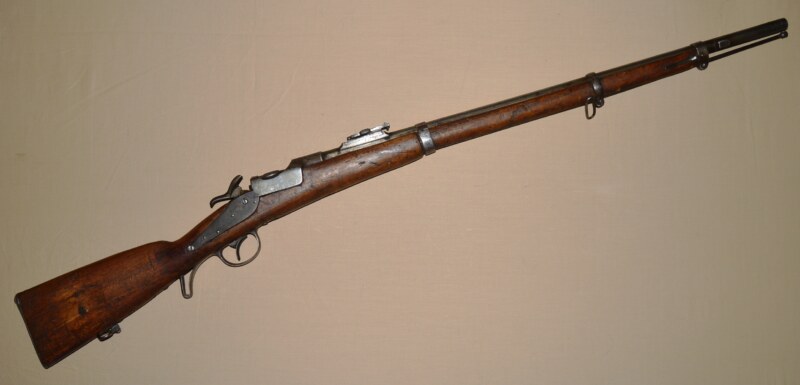
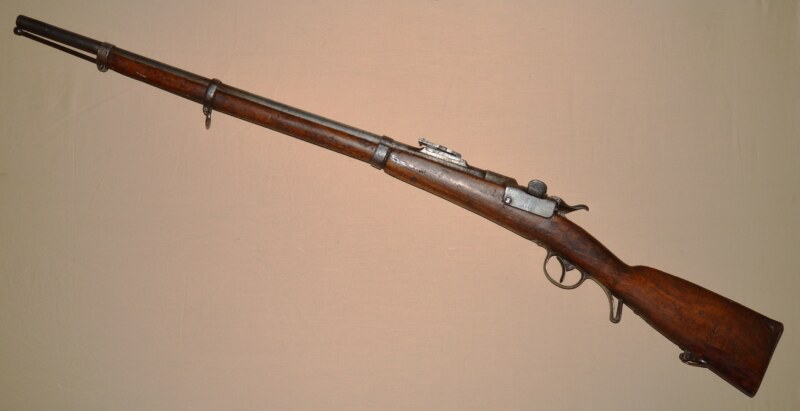
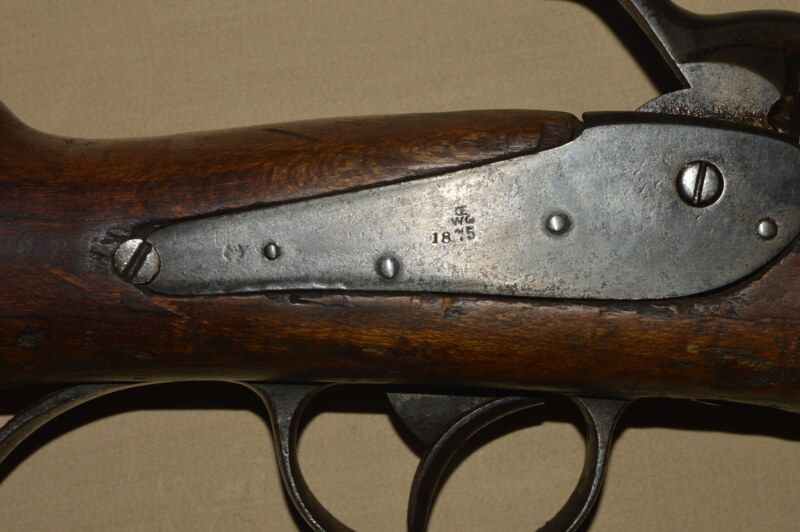
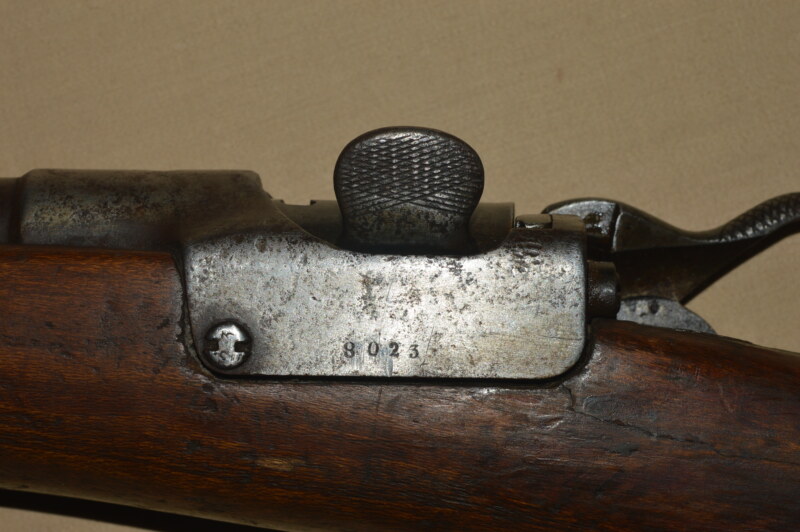
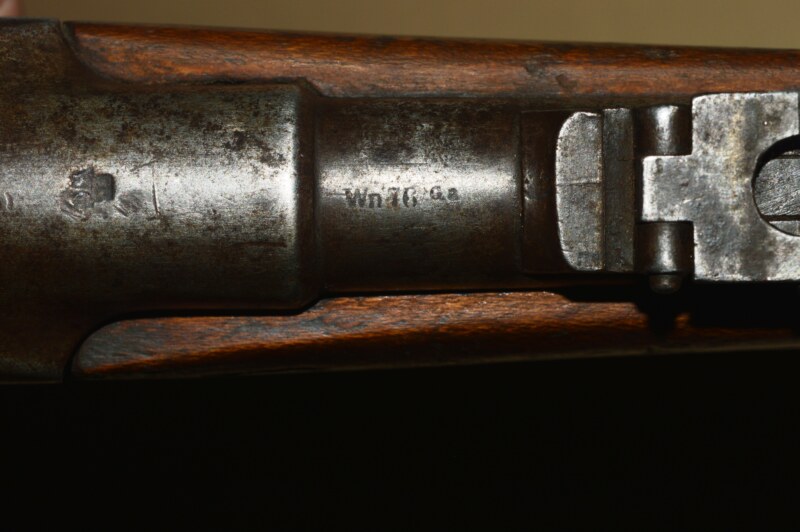
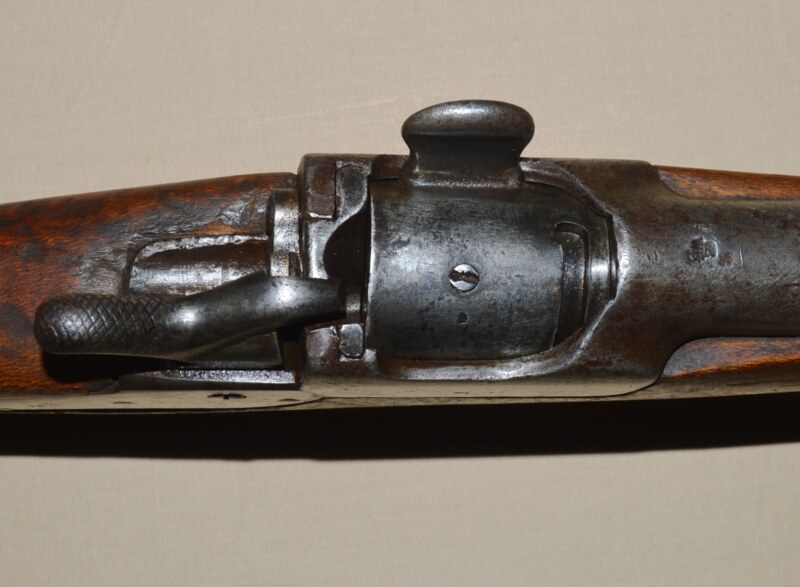
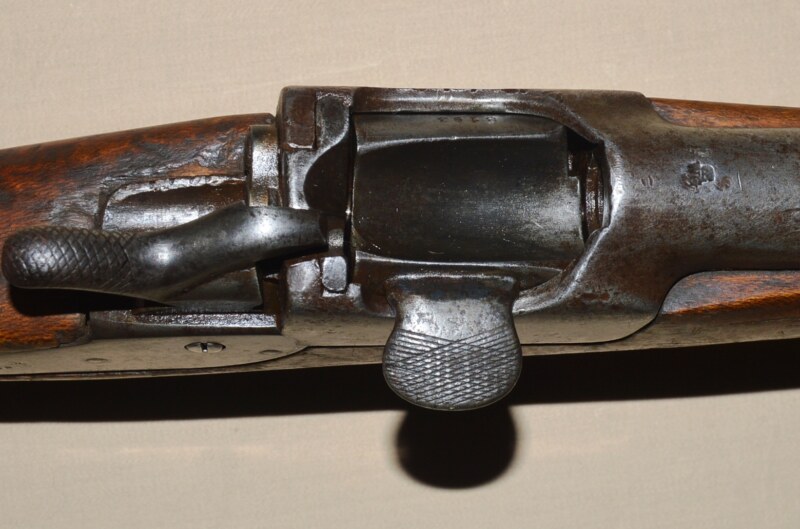
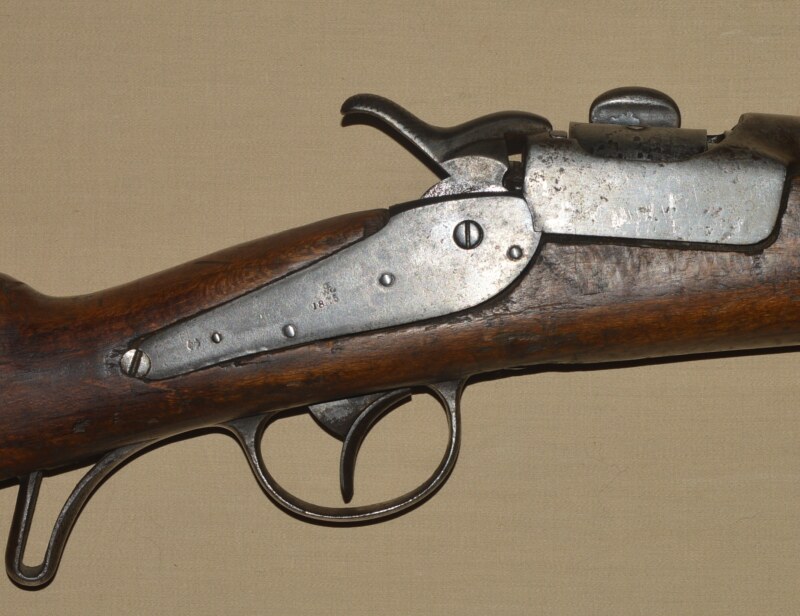
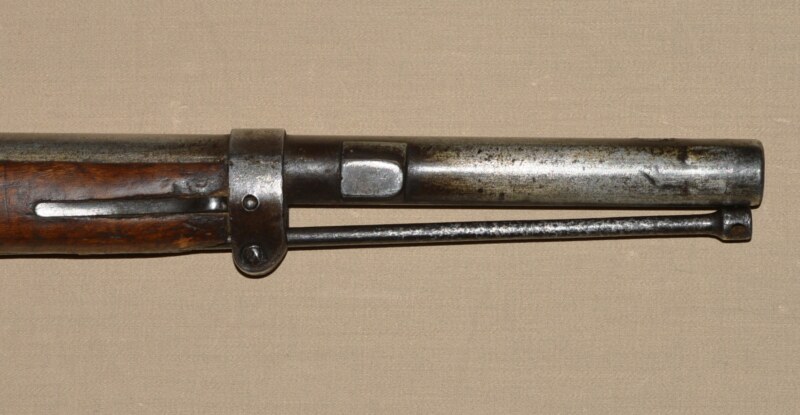
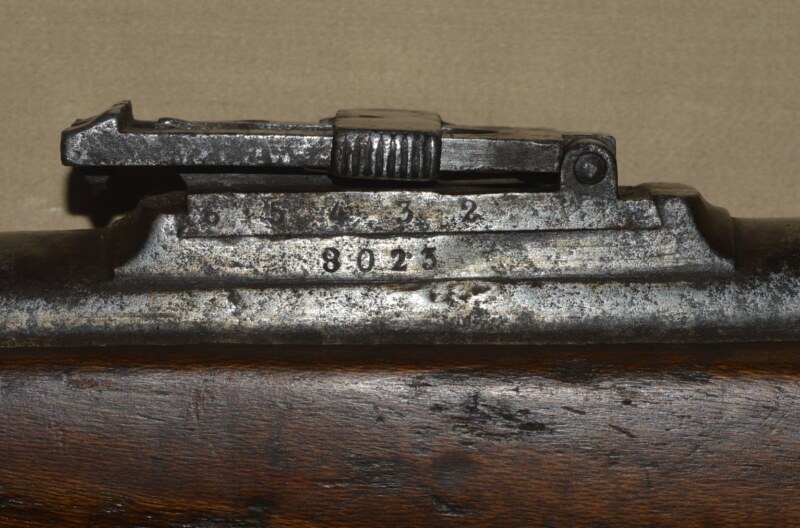
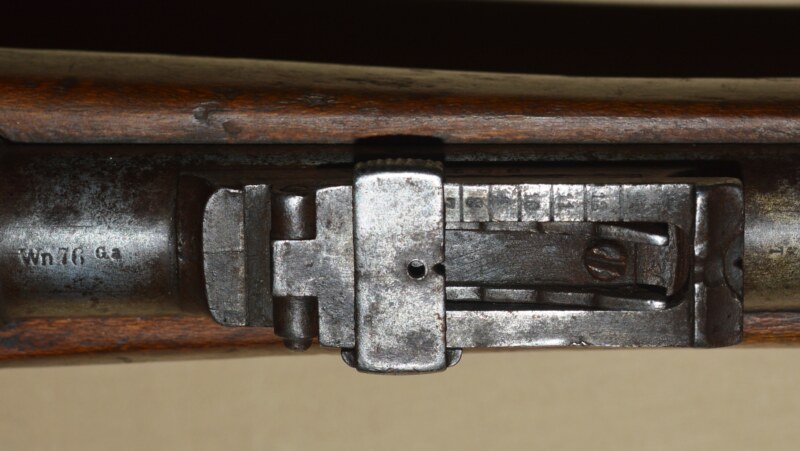
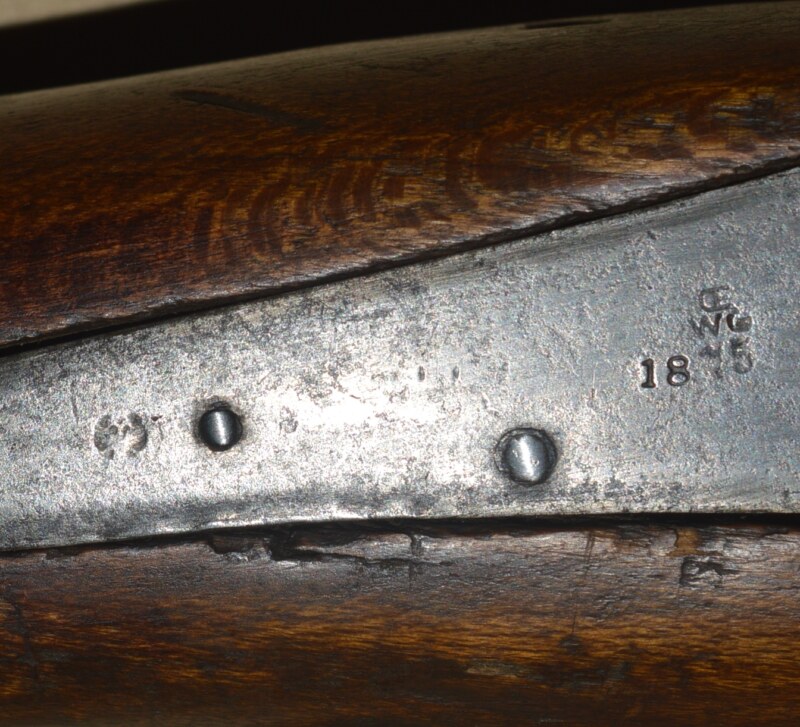
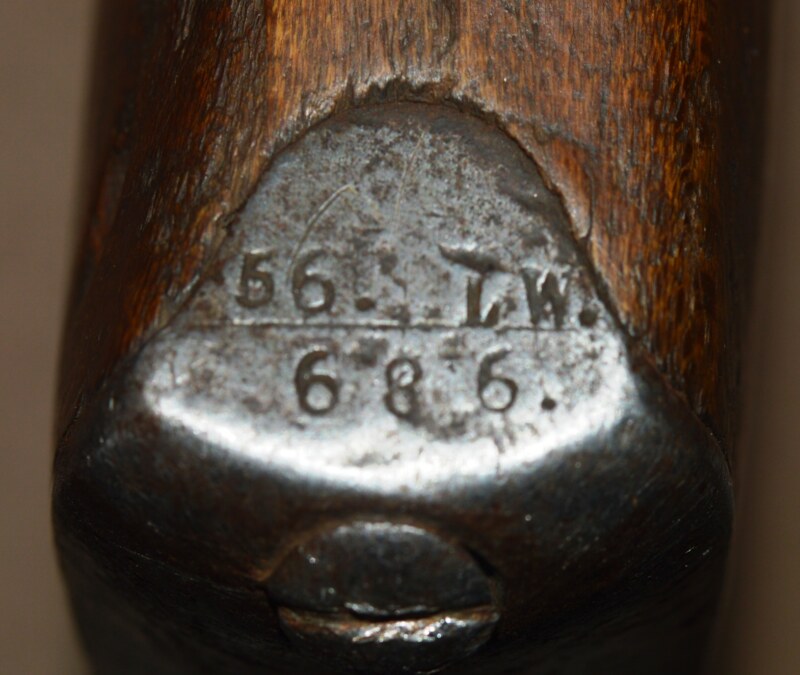
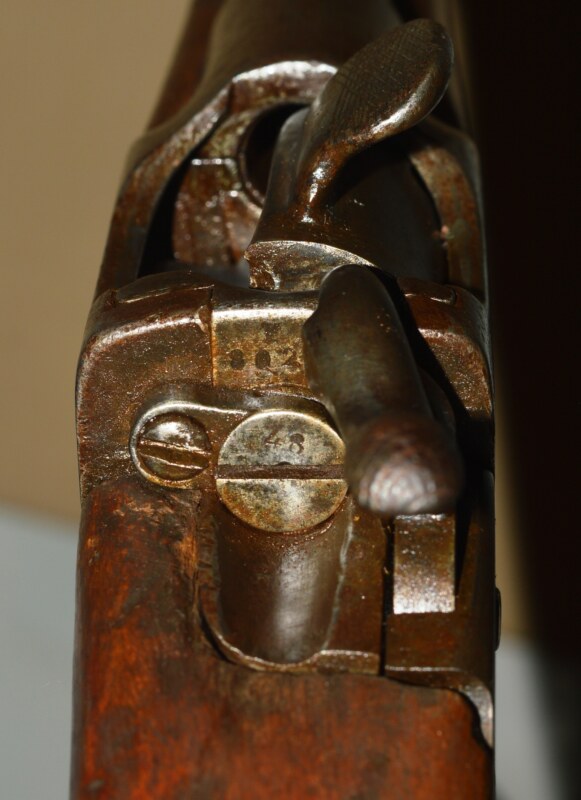
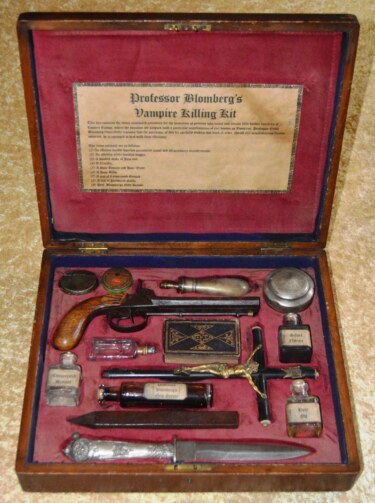 Professor Blomberg Vampire Killing Kit, 19th C and Later
Professor Blomberg Vampire Killing Kit, 19th C and Later  Long English Plug Bayonet, Early George I Period
Long English Plug Bayonet, Early George I Period 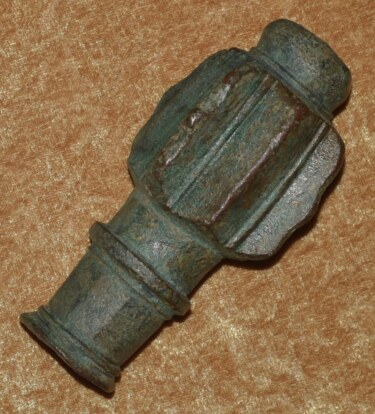 Bronze Age Mace Head, Western Asiatic, ca. 1200-700 BC
Bronze Age Mace Head, Western Asiatic, ca. 1200-700 BC 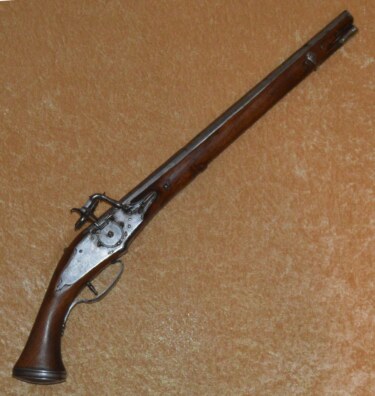 Italian Military Wheellock Pistol, First Half 17th C
Italian Military Wheellock Pistol, First Half 17th C